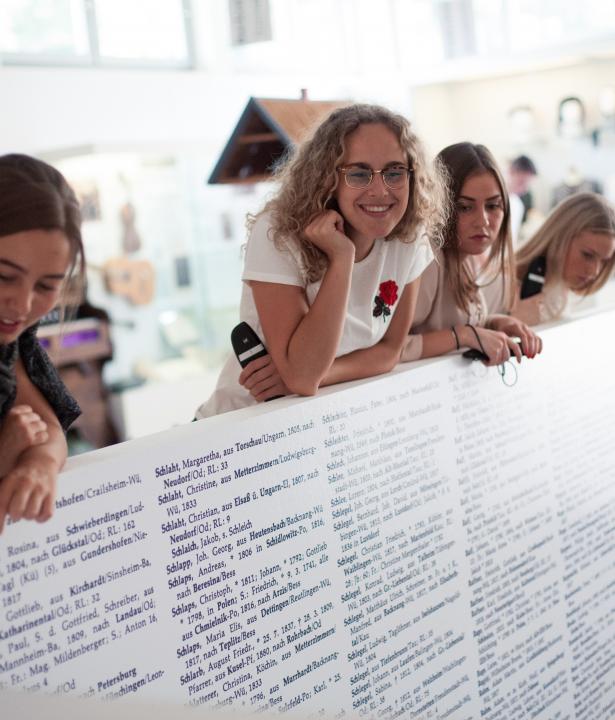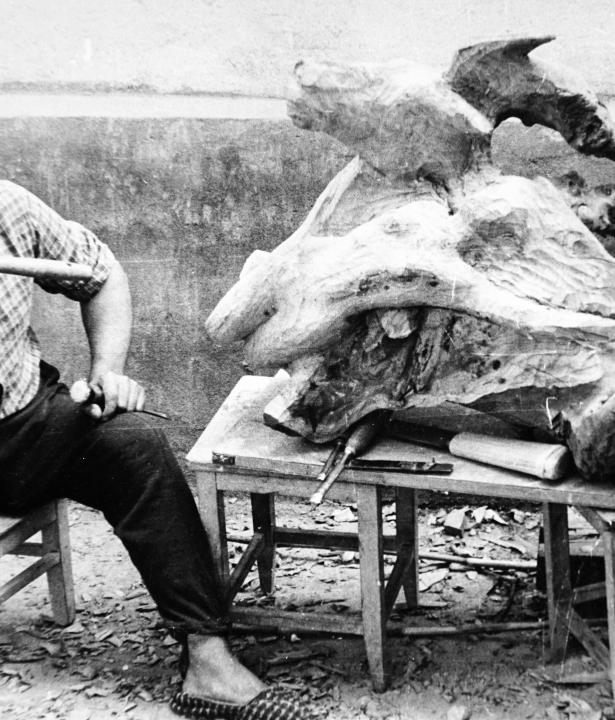"Religion is opium for the people!" was Lenin's rephrasing of a quotation from Karl Marx in 1905. For 80 years the Soviet state waged one battle after another against churchgoers and clergy. The Russian-German population was particularly affected by this persecution, as they were once assured by Catherine the Great of religious freedom. A new section of the permanent exhibition at the Museum for Russian-German Cultural History takes a close look at this unique era.
Text
In the history of the Russian-Germans, the Christian faith occupied a special place. In 1762, Tsarina Catherine II. invited foreigners to settle permanently in Russia. One of her promises was that they would be granted religious freedom. In the wake of the Russian revolutions of 1917, however, this attitude changed. Reduced to the "opium of the people" in the Marxist worldview, religion was gradually banned throughout Russia. From 1929 on, bibles were no longer allowed to be printed. But this did not stop people from believing. Instead, the practice of religion often continued in secret.
The exhibition "Verfolgte Kirche – Verbotene Bibel 1918-1988" ("Persecuted church – banned bible 1918-1988") at the Museum for Russian-German Cultural History investigates what happened to the faith and churches of the Russian-Germans after they were officially banned? It shows previously unpublished material from secret underground churches and objects that were hidden from the authorities for generations. These include printing presses that were operated illegally underground, smuggled items, and family bibles that were kept secret. These exhibits provide fascinating insights into the everyday religious life of the Russian Germans between 1918 and 1988.
Religion remains a topic of special importance for many Russian Germans to this day. After all, religious communities often offered the "(late) repatriates" a first point of contact in Germany during the (post-)Soviet period. At the same time, these communities are still often perceived by others as foreign. The exhibition provides an explanation for the religious diversity among Russian Germans.
The exhibition "Verfolgte Kirche – Verbotene Bibel 1918-1988" ("Persecuted church – banned bible 1918-1988") at the Museum for Russian-German Cultural History investigates what happened to the faith and churches of the Russian-Germans after they were officially banned? It shows previously unpublished material from secret underground churches and objects that were hidden from the authorities for generations. These include printing presses that were operated illegally underground, smuggled items, and family bibles that were kept secret. These exhibits provide fascinating insights into the everyday religious life of the Russian Germans between 1918 and 1988.
Religion remains a topic of special importance for many Russian Germans to this day. After all, religious communities often offered the "(late) repatriates" a first point of contact in Germany during the (post-)Soviet period. At the same time, these communities are still often perceived by others as foreign. The exhibition provides an explanation for the religious diversity among Russian Germans.

Soviet propaganda poster, 1930: Religion is poison. Spare the children. Museum für russlanddeutsche Kulturgeschichte / Museum für Russlanddeutsche Kulturgeschichte, CC BY-SA 4.0
Soviet propaganda poster, 1930: Religion is poison. Spare the children. Museum für russlanddeutsche Kulturgeschichte / Museum für Russlanddeutsche Kulturgeschichte, CC BY-SA 4.0
Externe Links
External Image









